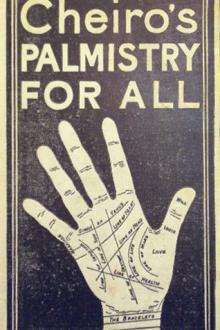The Diary - Samuel Pepys (red white and royal blue hardcover txt) 📗

- Author: Samuel Pepys
Book online «The Diary - Samuel Pepys (red white and royal blue hardcover txt) 📗». Author Samuel Pepys
For they, she knew, were all more ’fraid than he.
⋮
When a sweet sleep began the Duke to drown,
And with soft diadems his temples crown:
And first he orders all the rest to watch,
And they the foe, whilst he a nap doth catch:
But lo, Brouncker, by a secret instinct,
Slept on, nor heeded; he all day had winked.
The Duke in bed, he then first draws his steel,
Whose virtue makes the misled compass wheel.
So ere He waked, both Fleets were innocent,
And Brouncker member is of Parliament.”
—B. ↩
The House of Commons. ↩
Sir William Coventry’s speech is not printed in the reports of the Debates. ↩
See June 13th, 1667. ↩
Of the Ordnance. ↩
“Oct. 23, 1667. This day having been appointed for the laying of the foundation of the Royal Exchange in the place where it formerly stood, His Majesty was pleased to be present, and assisting at the solemnity; and accordingly went on horseback, attended by several persons of quality of the Court, to the place, where the Lord Mayor and Aldermen, the Sheriffs, and a Committee of the Mercers’ Company, waited to receive him. His Majesty, with the usual ceremonies, placed the first stone, and was afterwards entertained on the place with an excellent treat, where he was pleased to confer the honour of knighthood on the two sheriffs, Mr. Dennis Gauden and Mr. Thomas Davis.”
Rugge’s DiurnalThis (the second) building for the Royal Exchange was designed by Edward Jarman. It was burnt January 10th, 1838. ↩
I.e., laid the stone. ↩
Thomas Davies (or Davis), bookseller, was son of John Davies, of London, and Lord Mayor in 1676–77. He was born in 1631, and educated at St. Paul’s School. Died in 1679, and was buried in St. Sepulchre’s Church, Snow Hill, where there is a monument to his memory (see note 1605). ↩
Hugh Audley, the usurer. See November 23rd, 1662. He held an office in the Court of Wards, and is said to have lost £100,000 by its abolition. ↩
See April 29th, 1667. ↩
Speed’s Historie of Great Britaine, book ix, chap. xii. ↩
Rupert. ↩
William Smith was an actor with a commanding person. He occupied a prominent position on the stage, and retired between 1684 and 1688. Betterton’s part in The Villain was Monsieur Brisac; Mahgni, the villain, was taken by Sandford. See note 1571. ↩
The trumpet marine is a stringed instrument having a triangular-shaped body or chest and a long neck, a single string raised on a bridge and running along the body and neck. It was played with a bow. Hawkins refers very fully to the trumpet marine, and quotes an extract from the London Gazette (February 4th, 1674) giving an account of “a concert of four Trumpets marine, never heard of before in England.” Pepys’s reference proves this statement to be wrong. There is a paper on the musical notes of the trumpet and trumpet marine by Francis Roberts in the Philosophical Transactions (No. 193, 1692). The trumpet marine was a favourite instrument of Mons. Jourdain (Bourgeois Gentilhomme). ↩
Colonel John Birch, M.P. for Penryn (see note 655). Burnet says of Birch: he “was a man of a peculiar character. He had been a carrier at first, and retained still, even to an affectation, the clownishness of his education. He got up in the progress of the war to be a colonel, and to be concerned in the excise. And at the Restoration he was found to be so useful in managing the excise that he was put in a good post. He was the roughest and boldest speaker in the house, and talked in the language and phrases of a carrier, but with a beauty and eloquence that was always acceptable. He spoke always with much life and heat, but judgment was not his talent.” ↩
Colonel Chester proved that this story was incorrect (see note 2047). Sir Peter Leycester, who married a daughter of Lord Gerard, of Bromley, observes, in his History of Cheshire, that “the two famous women-actors in London” were daughters of ⸻ Marshall, chaplain to Lord G., by Elizabeth, bastard daughter of John Button, of Button. Sir Peter being connected by marriage with the Buttons, ought to have known the fact. ↩
Nell Gwyn. ↩
J. Uthwat, Clerk of the Survey at Deptford. ↩
Sir William Morice (1602–1676) was related through his wife to the Duke of Albemarle, and helped him in bringing about the Restoration. In February, 1659–60, Charles II bestowed upon Morice, with General Monk’s approval, “the seal and signet of the secretary of state’s office.” According to Mr. W. P. Courtney (Dict. Nat. Biog.), “his friends endeavoured in 1666 to make out that he was principal secretary of state, above Lord Arlington, but failed in their attempt, and at Michaelmas, 1668, Morice found his position so intolerable that he resigned his office and retired to his property, where he spent the rest of his days in collecting a fine library and in studying literature.” ↩
John Turner, B.D., whose ancestors were of Hemel Hemsted, had been a Fellow of Magdalene College, Cambridge, and became rector of Eynesbury in 1649. He resigned the living, of which Lord Sandwich was the patron, to his son, Edward Turner, in 1689; and dying in 1705, aged eighty-four, had sepulture in the parish church. —B. ↩
Captain Edward Hill.
“May 15th, 1667, M. Wren to the Navy Commissioners. Pray examine at once the men of the Coventry as to the





Comments (0)